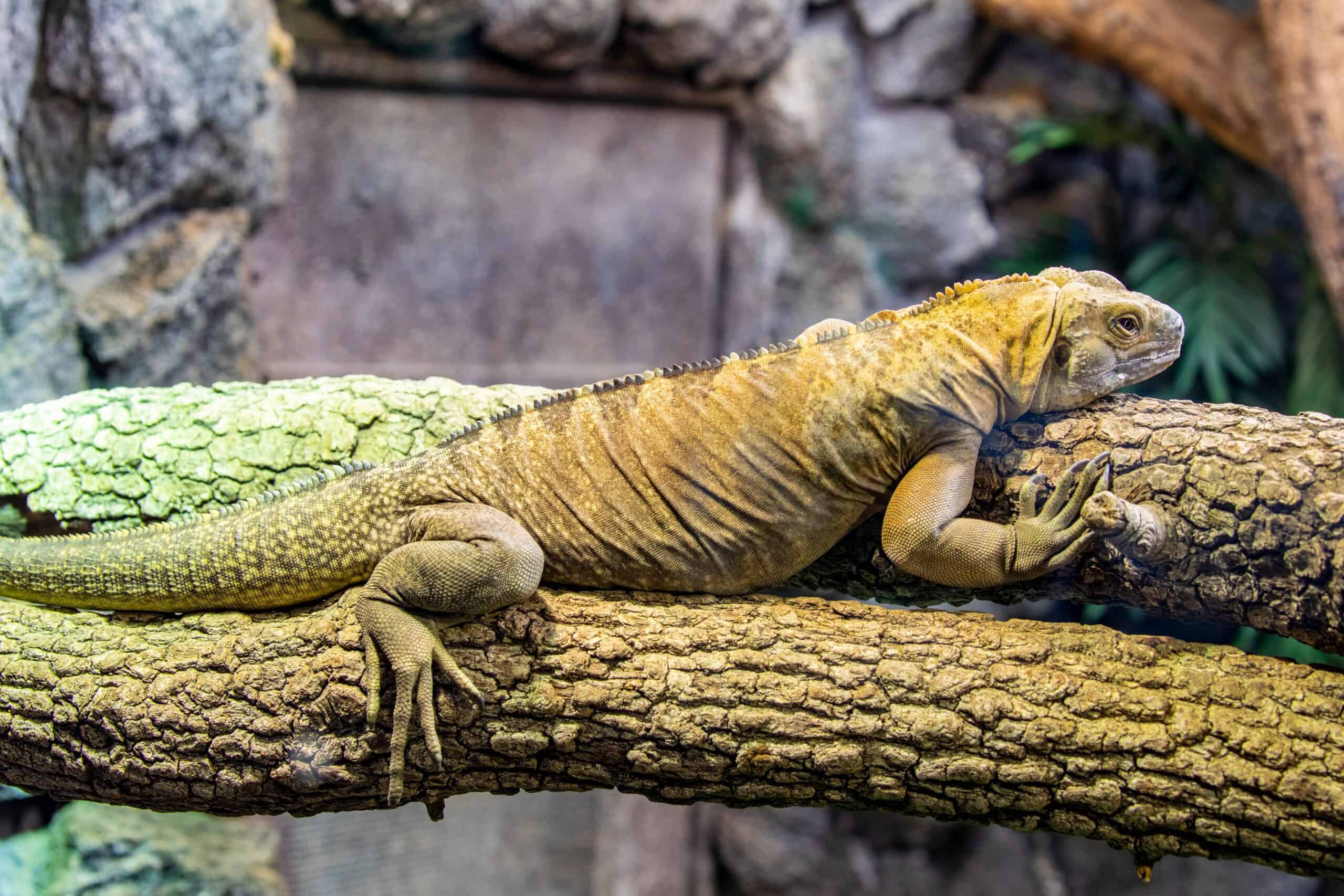Exploring the world’s most isolated regions reveals a treasure trove of exotic birds, each with its own unique beauty and fascinating behaviors. These birds, often found in remote forests, high-altitude wetlands, and untouched islands, captivate with their vibrant plumage and intriguing adaptations. From the regal Victoria Crowned Pigeon of New Guinea to the elusive Kakapo of New Zealand, each species tells a story of survival and splendor in nature’s hidden corners. Understanding and preserving these extraordinary birds is essential to maintaining the rich biodiversity of our planet.
Wilson’s Bird-of-Paradise
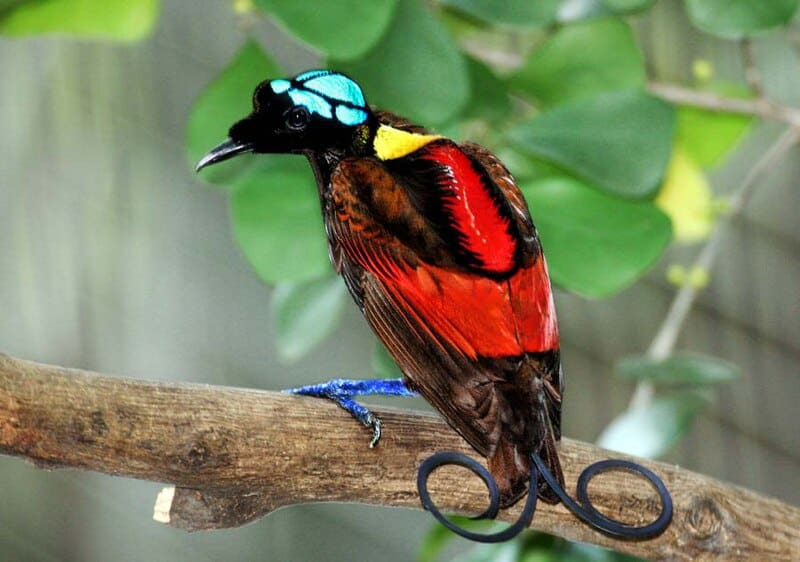
In the remote forests of Indonesia’s Waigeo and Batanta Islands, the Wilson’s Bird-of-Paradise dazzles with its vibrant plumage. This bird sports a striking mix of crimson and royal blue feathers, complemented by a unique turquoise crown. Known for its elaborate courtship dances, the male clears a display area to showcase his colors. The species remains elusive, often seen only by the most dedicated birdwatchers. Its captivating beauty and behaviors make it a prized sighting in its isolated habitat.
Kakapo

The Kakapo, or “night parrot,” is a flightless, nocturnal bird native to New Zealand. With its mossy green and yellow feathers, it blends seamlessly into the forest floor. This critically endangered bird has a distinctive, musty-sweet odor, and its booming mating calls can be heard kilometers away. Conservation efforts have relocated the Kakapo to predator-free islands to protect its dwindling population. Its unique characteristics and the challenges it faces make the Kakapo one of the most intriguing birds in isolated regions.
Victoria Crowned Pigeon
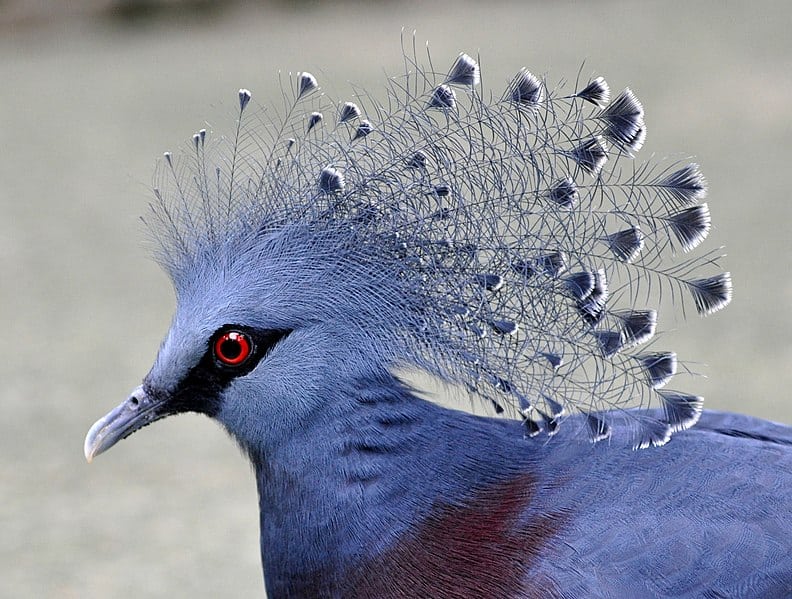
Residing in the lowland forests of New Guinea, the Victoria Crowned Pigeon is the largest pigeon species in the world. Its regal appearance is marked by a striking blue crest, deep blue-gray feathers, and bright red eyes. These pigeons are social birds, often found in pairs or small flocks. Despite their large size, they are adept at foraging for fallen fruits on the forest floor. Their elegance and rarity make them a fascinating subject for bird enthusiasts.
Golden Pheasant

In the dense forests of western China, the Golden Pheasant stands out with its dazzling array of colors. The male’s bright red body, golden crest, and iridescent green and blue plumage make it a spectacular sight. Known for its shy nature, it often remains hidden in thick undergrowth, emerging primarily at dawn and dusk. Its striking appearance and elusive behavior add to its exotic charm. Observers often consider a glimpse of this bird a rare and rewarding experience.
Resplendent Quetzal
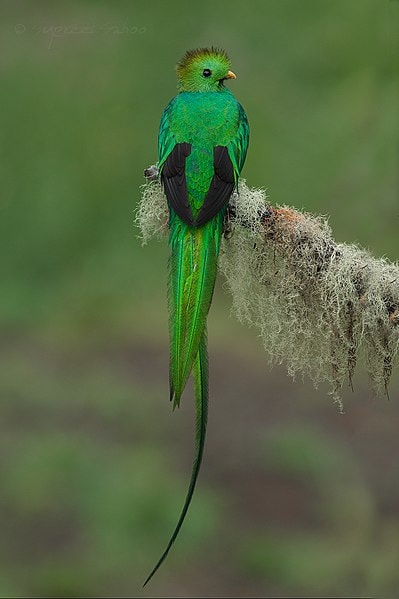
The Resplendent Quetzal, found in Central America’s cloud forests, is renowned for its vibrant green and red plumage and long, flowing tail feathers. This bird plays a significant role in Mesoamerican mythology and is considered a symbol of freedom. Preferring to nest in dead trees, it feeds on fruits, insects, and small vertebrates. Its breathtaking beauty and cultural significance make it a cherished species in its remote habitat. The quetzal’s vivid colors and graceful flight are a wonder to behold.
Helmeted Hornbill
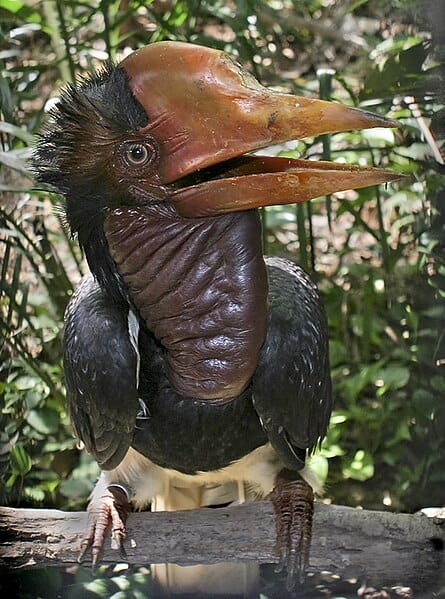
The Helmeted Hornbill, native to the rainforests of Sumatra, Borneo, and Thailand, is notable for its large casque, which resembles a helmet. This bird has a unique laugh-like call that echoes through the forest. It plays a vital ecological role by dispersing seeds from the fruits it consumes. Unfortunately, it faces severe threats from poaching and habitat loss. The hornbill’s distinctive appearance and behaviors make it a fascinating yet vulnerable species in its isolated range.
Shoebill
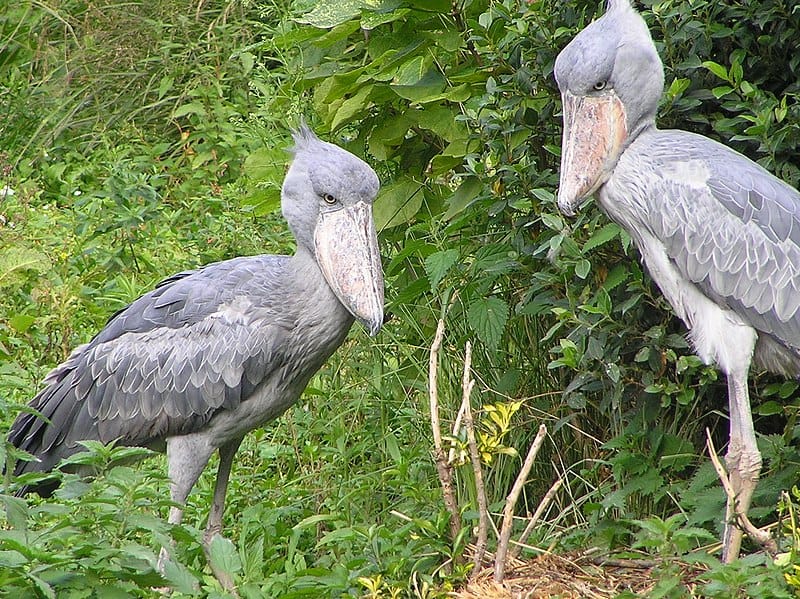
The Shoebill, native to the swamps of central tropical Africa, is an extraordinary bird with a prehistoric appearance. Its massive, shoe-shaped bill is used to catch large fish, amphibians, and even young crocodiles. Standing up to five feet tall, it remains motionless for long periods, waiting to strike its prey. Its unique hunting technique and dinosaur-like appearance make the shoebill a fascinating subject of study. However, habitat destruction poses a significant threat to its survival.
Philippine Eagle
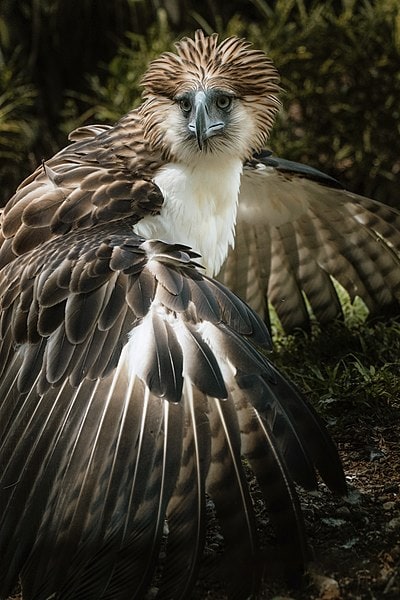
The Philippine Eagle, also known as the Monkey-eating Eagle, is one of the world’s largest and rarest eagles. Found only in the Philippines, it inhabits dense tropical forests. With its striking white and brown plumage and impressive wingspan, it is a powerful predator. Conservation efforts focus on protecting its dwindling habitat and preventing poaching. The Philippine Eagle’s majestic presence and critical conservation status make it a symbol of biodiversity in the region.
Harpy Eagle
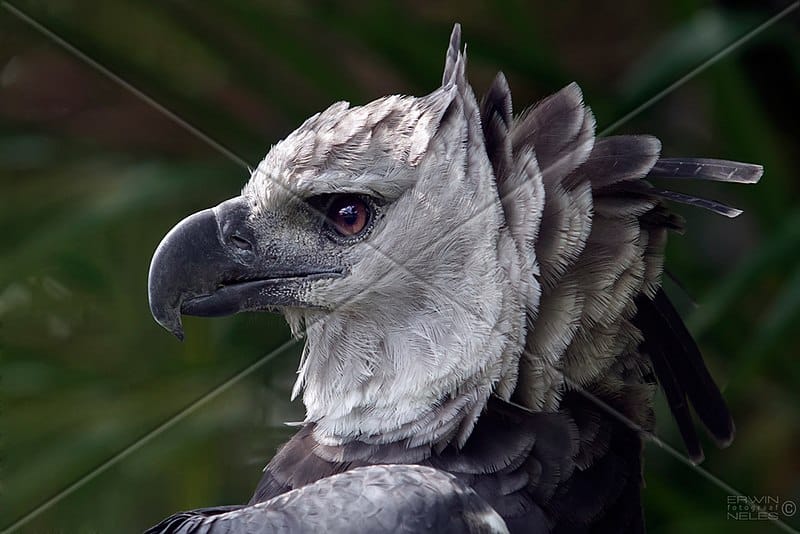
The Harpy Eagle, native to the rainforests of Central and South America, is known for its powerful build and striking appearance. With its massive claws and distinctive crest, it preys on monkeys, sloths, and large birds. This apex predator requires large tracts of undisturbed forest to thrive. Its formidable hunting skills and regal appearance make it a sought-after sight for wildlife enthusiasts. Conservation efforts aim to preserve its habitat and ensure its survival.
Kagu

The Kagu, an endemic bird of New Caledonia, is easily recognizable by its bluish-gray feathers and striking orange legs and beak. This ground-dwelling bird has a unique, nasal call that echoes through the forest. It feeds on insects, small reptiles, and other invertebrates. Habitat loss and introduced predators have severely impacted its population. The Kagu’s distinctive appearance and vocalizations make it a unique and important species in its isolated habitat.
Sri Lanka Frogmouth
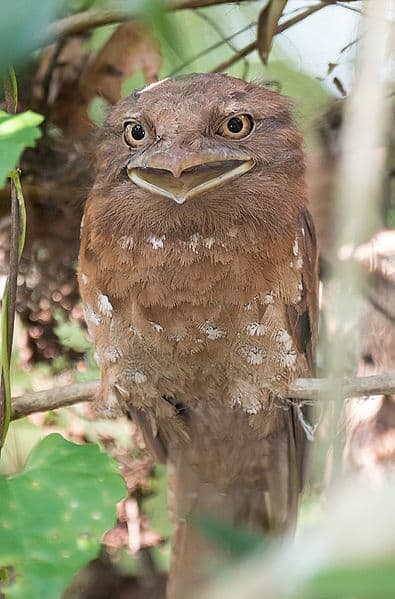
The Sri Lanka Frogmouth, found in the dense forests of Sri Lanka and southwestern India, is a nocturnal bird with a cryptic appearance. Its mottled brown plumage allows it to blend seamlessly with tree bark. It has a wide, frog-like mouth used to catch insects and small vertebrates. This elusive bird is rarely seen during the day, making it a prized find for birdwatchers. Its unique adaptations and secretive nature add to its exotic allure.
Vulturine Guineafowl
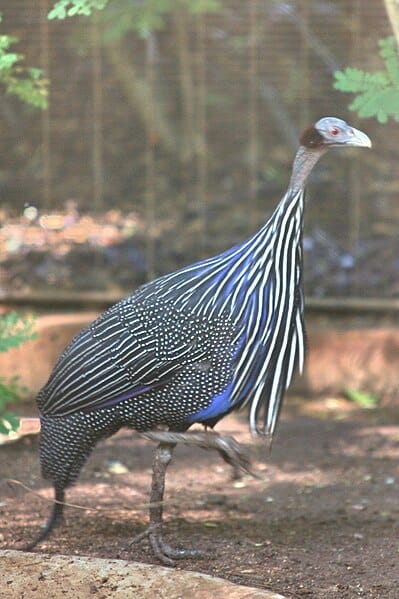
The Vulturine Guineafowl, native to the dry savannas of northeastern Africa, is known for its striking blue and black plumage and bare, vulture-like head. These birds are highly social, often found in large flocks foraging for seeds, insects, and small vertebrates. Their long, slender necks and powerful legs make them adept runners. Despite their somewhat ominous appearance, they play a vital role in their ecosystem. The Vulturine Guineafowl’s distinctive look and social behavior make it a fascinating species to observe.
Black-necked Crane
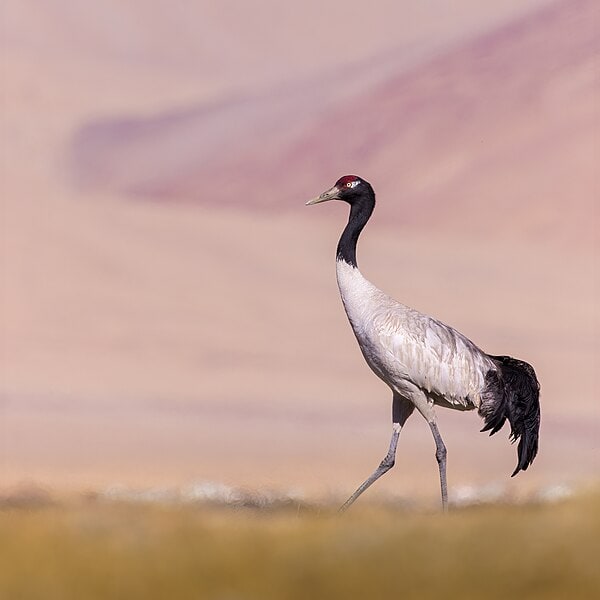
The Black-necked Crane, found in the high-altitude wetlands of the Tibetan Plateau and Bhutan, is revered in local cultures for its beauty and grace. With its striking black neck and white body, it performs elaborate courtship dances. These cranes feed on plant tubers, grains, and small invertebrates. They face threats from habitat loss and climate change. Conservation efforts aim to protect their breeding and wintering grounds, ensuring the survival of this elegant species.
Spix’s Macaw
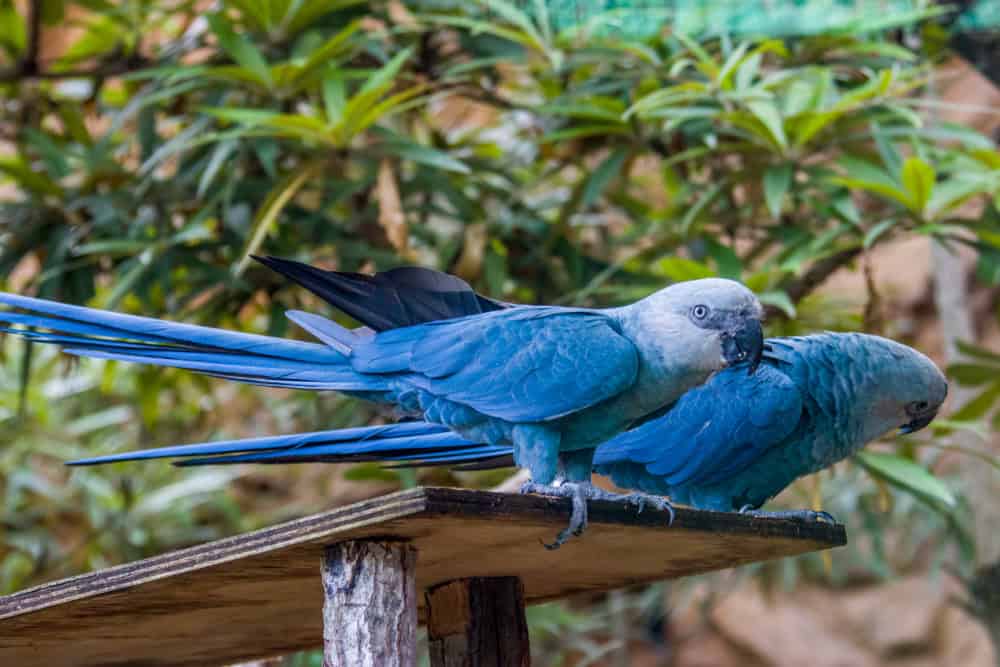
The Spix’s Macaw, native to the Brazilian Amazon, is known for its vivid blue plumage and critically endangered status. Efforts to reintroduce this bird into the wild have been ongoing, with captive breeding programs playing a crucial role. Its preference for specific types of trees for nesting makes it highly vulnerable to deforestation. The Spix’s Macaw’s striking appearance and conservation story have garnered international attention. Its plight highlights the importance of preserving natural habitats for future generations.
Marvelous Spatuletail
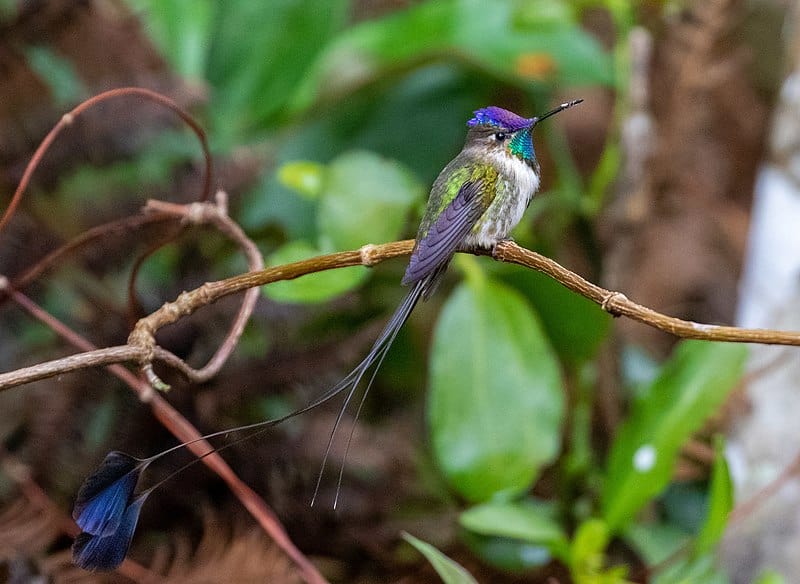
The Marvelous Spatuletail, found only in the Andean cloud forests of Peru, is a tiny hummingbird with spectacular tail feathers. The male’s long tail feathers end in violet-blue spatula-shaped discs, which it uses in intricate courtship displays. This bird feeds on nectar and small insects, playing a vital role in pollination. Habitat destruction poses a significant threat to its survival. The Marvelous Spatuletail’s unique beauty and behaviors make it a true gem of the Andean forests.
Raggiana Bird-of-Paradise

The Raggiana Bird-of-Paradise, endemic to Papua New Guinea, is famous for its elaborate plumage and courtship displays. Males showcase vibrant red and orange feathers, performing intricate dances to attract females. These birds inhabit tropical forests, where they feed on fruits and small animals. Their dazzling displays and unique behaviors have made them icons of the bird-of-paradise family. Conservation efforts focus on preserving their forest habitats to ensure their continued existence.
Horned Guan
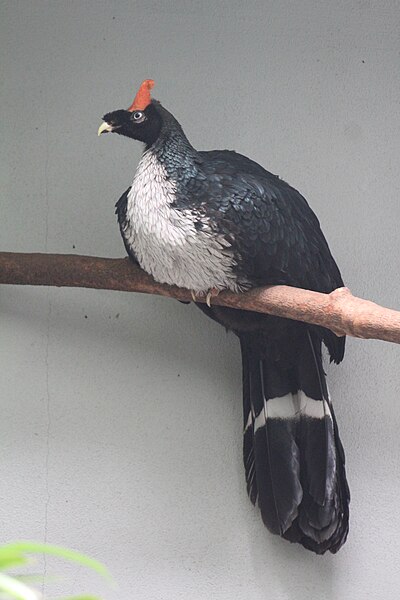
The Horned Guan, found in the cloud forests of Mexico and Guatemala, is a rare and striking bird with a distinctive red horn on its head. It feeds on fruits, leaves, and small invertebrates, often foraging high in the forest canopy. This bird’s population is threatened by habitat loss and hunting. Conservation efforts are critical to preserving its unique habitat and ensuring its survival. The Horned Guan’s peculiar appearance and behaviors make it a fascinating subject for ornithologists.
Andean Cock-of-the-rock
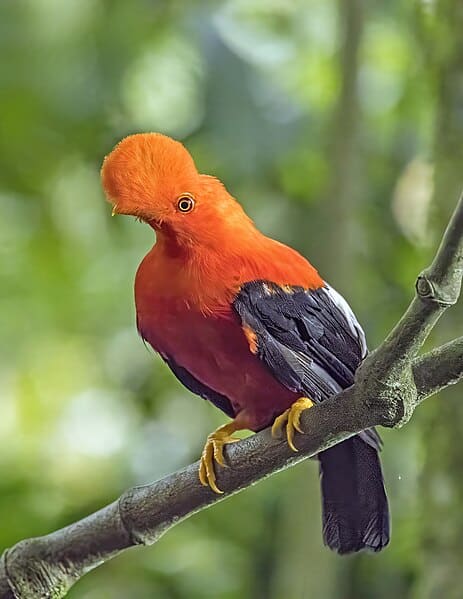
The Andean Cock-of-the-rock, native to the cloud forests of the Andes, is known for its bright orange plumage and fan-shaped crest. Males gather in communal display grounds, called leks, to perform elaborate courtship dances. These birds feed primarily on fruits, playing a crucial role in seed dispersal. Habitat loss and fragmentation pose significant threats to their population. The Andean Cock-of-the-rock’s striking appearance and unique mating rituals make it a highlight of Andean wildlife.
This article originally appeared on Rarest.org.
More From Rarest.Org
Living in a gated community offers unparalleled privacy, security, and luxury. These exclusive enclaves attract the world’s elite, providing them with a sanctuary from the hustle and bustle. Read more.
Reptiles are a vital part of our planet’s biodiversity. Many species face threats due to habitat loss, poaching, and climate change. Here are some of the most threatened reptiles in the world, each struggling for survival. Read more.
Discover the epitome of luxury with the world’s wealthiest beachfront properties. These exquisite homes offer unparalleled views, exclusive amenities, and prime locations. Read more.


